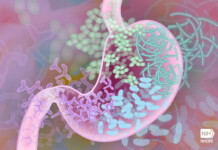By Breanne Nalder, M.S. and Katherine A. Beals, PhD, RD, FACSM, CSSD — To be competitive in an endurance sports such as cycling, athletes must maintain physically demanding exercise schedules. Many of us will spend several hours a day, often 7 days a week, in the saddle. Such extensive training and racing schedules demand high energy and nutrient intakes. These energy needs are measured in the units we know, and maybe even dread: the calorie. Too many calories and our climbing will suffer; not enough calories and our performance as a whole will suffer. It is a balancing act (calories in vs. calories out) that can be difficult at times, but not impossible.
What is a Calorie?
A calorie is technically a measure of heat; more specifically the amount of heat needed to raise the temperature of 1 gram of water 1 °C (now usually defined as 4.1868 joules). Intuitively you probably were aware of this definition. We often use the term, “burn calories” to describe energy or caloric expenditure. And we all notice that with exercise we get warmer (we are generating heat). And, of course, those of you that spent time training indoors this winter probably noticed the significant temperature change that occurred in the room from the start to the end of your ride, especially if that ride was with several other people such as in a spin class. When you have several bodies all “burning calories” you can generate a lot of heat!
Calories In and Calories Out
The most common question we get in the nutrition world is probably “how many calories do I need in a day?” Such a simple question; but, unfortunately there is no simple answer. This is because calorie needs are highly individual and can range anywhere from 1200-8000 calories per day, depending on age, gender, body size, body composition, genetics and, of course, exercise type, duration and intensity. There is the argument that men burn more calories than women. That may be the case, but it is likely because men are bigger and have more lean muscle mass compared to women; and, therefore, it takes more energy to move their body through space (e.g., cycling). So, one of the key factors determining energy needs is body size and, thus, energy requirements are most accurately expressed relative to body weight, or more accurately, lean body mass.
Calories In Less Than Calories Out = Poor Performance and Compromised Health
In the quest to improve performance, cyclists often place an emphasis on improving the power-to-weight ratio (power: weight), which is measured by the amount of power (watts) one is able to generate per pound or kilogram of body weight. A higher power: weight ratio is important to a cyclist, as a light yet strong physique is more efficient at propelling the bike and body up steep mountain grades and for maintaining power in an aerodynamic position in time trail events, as it takes less energy to sustain less body mass during long rides or races. Because of the potential benefits of improving power, cyclists continually strive for the most muscle mass on the lightest body frames. Therefore, they attempt to lose fat mass while maintaining fat free mass (FFM) without losing power on the bike. Some of the more common strategies used include restricting energy intake (sometimes severely), limiting carbohydrate intake and training in a fasted state.
These weight loss strategies, while potentially effective in improving the power to: weight ratio over the short-term, can have significant negative consequences on nutritional status, athletic performance and overall health over the long-term. Training in a fasted state can compromise the athlete’s ability to exercise at intensities necessary to induce important training effects and may curtail training sessions due to glycogen depletion and subsequent fatigue. Similarly, failure to consume carbohydrates during exercise will result in more rapid glycogen depletion and earlier onset of fatigue. Also with endurance training, as glycogen stores are depleted less glucose is available for the brain, which negatively effects cognition and reaction time. The body may break down protein for gluconeogenesis at that point, which could result in an unintended reduction in muscle mass and subsequent loss of power. As some cyclists will restrict calories in liquids, they may avoid drinking sports drinks or other fluids, which can result in dehydration, electrolyte imbalances and glucose depletion. Finally, inadequate refueling (especially CHO replenishment) post-exercise can impair glycogen synthesis and reduce the effectiveness of recovery, particularly when there is less than 24 hours before the next training session. This can put the body into a catabolic cascade that cannot only impair subsequent performance, but increase the risk of injury.
Inadequate calorie intake is also often associated with inadequate nutrient intake, especially if such a practice is routine over time. Besides CHO, protein, and fat, athletes consuming energy insufficient diets often have inadequate intakes of essential vitamins and minerals including calcium, iron, A, C, D, E, and B vitamins, all of which are essential for optimal performance.
The Concept of Energy Availability
Cyclists who actively restrict energy intake may be putting themselves at risk for what has recently been described as “low energy availability”. The term energy availabilty has been defined as the amount of energy available for the metabolic processes of the body after energy is used for exercise, normalized for lean body mass (because lean body mass is the most metabolically active tissue).
An individual who fails to consume sufficient calories to meet the cost of calories expended in exercise would have low energy availability. Researchers examining this phenomenon have determined that an energy availability less than 30 calories per kilogram of lean body mass is considered low, while an energy availability of greater than 45 calories per kilogram of lean body mass is considered optimal. Between 30 and 45 calories per kilogram of lean body mass is still somewhat of a “grey area” that may or may not be considered “marginal” energy availability (further research is really needed in this area).
What the research is clear on is that long periods of low energy availability can impair both the health and physical performance of an athlete, although the effects appear to be surprisingly variable. Health consequences of low energy availability may involve the cardiovascular, reproductive, endocrine, gastrointestinal, renal, and central nervous systems. In addition, low energy availability can impair cognitive function and decrease the body’s ability to build bone, maintain muscle mass, repair damaged tissue, and recover from injury.
Getting the Calories you Need
The most accurate way to determine the calories you expend in a day and thus, the calories you need to consume to achieve calorie balance, is to have your energy expenditure measured in a laboratory (using a whole-room calorimeter). Unfortunately, most of us don’t have the time, money or fortitude to do that (the whole-room calorimeter is a very small room, so claustrophobics beware!). Thus, we are left with more indirect measures. There are a number of energy expenditure equations that you can use to estimate your calorie expenditure and, thus, your calorie needs (e.g., Harris-Benedict, Mifflin-St Jeor, Owen et al.). However, these can often overestimate calorie expenditure in endurance athletes. If you are really interested in finding out your specific calorie requirements and/or altering your body weight to improve your power/weight ratio, your best bet is to consult with a licensed sports dietitian who can develop a specific nutritional plan for you. The academy of nutrition and dietetics maintains a search engine on their website to help you locate a licensed sports RD in your area. www.eatright.org/programs/rdfinder/
Practicing adequate energy intake before, during and after exercise can only help you achieve the results you want this cycling season!
Breanne Nalder, MS recently completed her master’s degree in nutrition with an emphasis in sports dietetics at the University of Utah and is a competitive CAT 2 cyclist. For personal nutrition coaching, you can reach Breanne at 801-550-0434 or breannenalder@gmail.com.
Katherine Beals, PhD, RD, FACSM, CSSD is an associate professor (clinical) in the Division of Nutrition at the University of Utah. She is a registered dietitian, a certified specialist in sports dietetics and a fellow of the American College of Sports Medicine.








